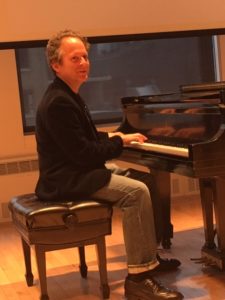“I hope you think about the wonder of multiple perspectives in your own experience. I hope you think about what happens to you when it becomes possible to abandon one-dimensional viewing, to look from many vantage points and, in doing so, construct meanings scarcely suspected before… Our object…where young people are concerned, is to provide increasing numbers of opportunities for tapping into long unheard frequencies, for opening new perspectives on a world increasingly shared. It seems to me that we can only do so with regard for the situated lives of diverse children and respect for the differences in their experiences.” Maxine Greene, Variations on a Blue Guitar (pp. 187, 189)
It was an honor to present a lecture at the Maxine Greene Institute at The New School this past Sunday, December 15. The event was organized by my dear colleagues Holly Fairbank, Heidi Upton and Jean Taylor who serve on the board of The Greene Institute and remain actively involved in educating people around the world about Greene’s essential work.
The lecture gave me a precious opportunity to look back at the past 20 years of my teaching practice since I met Maxine Greene at Lincoln Center Institute for the Arts in Education in 1999. I was invigorated to see the fruits of seeds she planted with her words, concepts, and models expressed by my students. This is certainly true at Jazz Power Initiative, the organization I co-founded in 2003 and continue to lead. I was happy to share the breadth of our work in this video by Josh Robertson with supervision from Emmy Award Winner, Phil Bertelsen:
I also took some time to review the work I did at Jazz at Lincoln Center when I served as founding Director of the Middle School Jazz Academy and led the program from 2005-2016. Luckily, I came across two videos that boldly illustrate what we accomplished in my time there–the active marriage of skills-based and aesthetic-based arts education through jazz.
The first video from 2014 shows my 11-13-year-old students performing Perdido. This song was composed by Juan Tizol (from Puerto Rico) and made famous by the Duke Ellington Orchestra. The arrangement showcases the peak of what these students can play in an ensemble as well as multiple short solos in quick sequence giving multiple perspectives/experiences on the solo art of jazz. The students in this video had been playing a range of 6 months to 2 years when they recorded it. Their progress in that short amount of time is remarkable.
The following video shows many of these same students performing free improvisations in front of abstract works of art by extraordinary African American painters on display at the Michael Rosenfeld Gallery. The video is 10 minutes and if you hang in there until the end, you will hear amazingly rich comments from the students on their experience at the gallery. At the Maxine Greene Institute presentation, this was the highlight. It’s what we live for in Aesthetic Education–students from diverse backgrounds articulating their experience of complex works of art, taking their own perspective seriously and expressing their intelligence and sensitivity around peers and elders with poise and confidence. Wow, wow, wow…enjoy and please let me know what you think!
Happy Holidays and may 2020 bring new openings and imaginative breakthroughs!
Eli




Leave a Reply